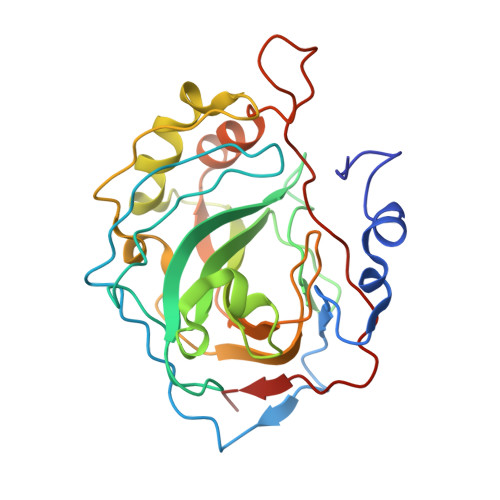Highly Potent First Examples of Dual Aromatase-Steroid Sulfatase Inhibitors Based on a Biphenyl Template.
Woo, L.W.L., Jackson, T., Putey, A., Cozier, G., Leonard, P., Acharya, K.R., Chander, S.K., Purohit, A., Reed, M.J., Potter, B.V.L.(2010) J Med Chem 53: 2155
- PubMed: 20148564
- DOI: https://doi.org/10.1021/jm901705h
- Primary Citation of Related Structures:
2WD3 - PubMed Abstract:
Single agents against multiple drug targets are of increasing interest. Hormone-dependent breast cancer (HDBC) may be more effectively treated by dual inhibition of aromatase and steroid sulfatase (STS). The aromatase inhibitory pharmacophore was thus introduced into a known biphenyl STS inhibitor to give a series of novel dual aromatase-sulfatase inhibitors (DASIs). Several compounds are good aromatase or STS inhibitors and DASI 20 (IC(50): aromatase, 2.0 nM; STS, 35 nM) and its chlorinated congener 23 (IC(50): aromatase, 0.5 nM; STS, 5.5 nM) are examples that show exceptional dual potency in JEG-3 cells. Both biphenyls share a para-sulfamate-containing ring B and a ring A, which contains a triazol-1-ylmethyl meta to the biphenyl bridge and para to a nitrile. At 1 mg/kg po, 20 and 23 reduced plasma estradiol levels strongly and inhibited liver STS activity potently in vivo. 23 is nonestrogenic and potently inhibits carbonic anhydrase II (IC(50) 86 nM). A complex was crystallized and its structure was solved by X-ray crystallography. This class of DASI should encourage further development toward multitargeted therapeutic intervention in HDBC.
- Medicinal Chemistry, Department of Pharmacy and Pharmacology and Sterix Ltd, University of Bath, Claverton Down, Bath BA2 7AY, UK.
Organizational Affiliation:


















